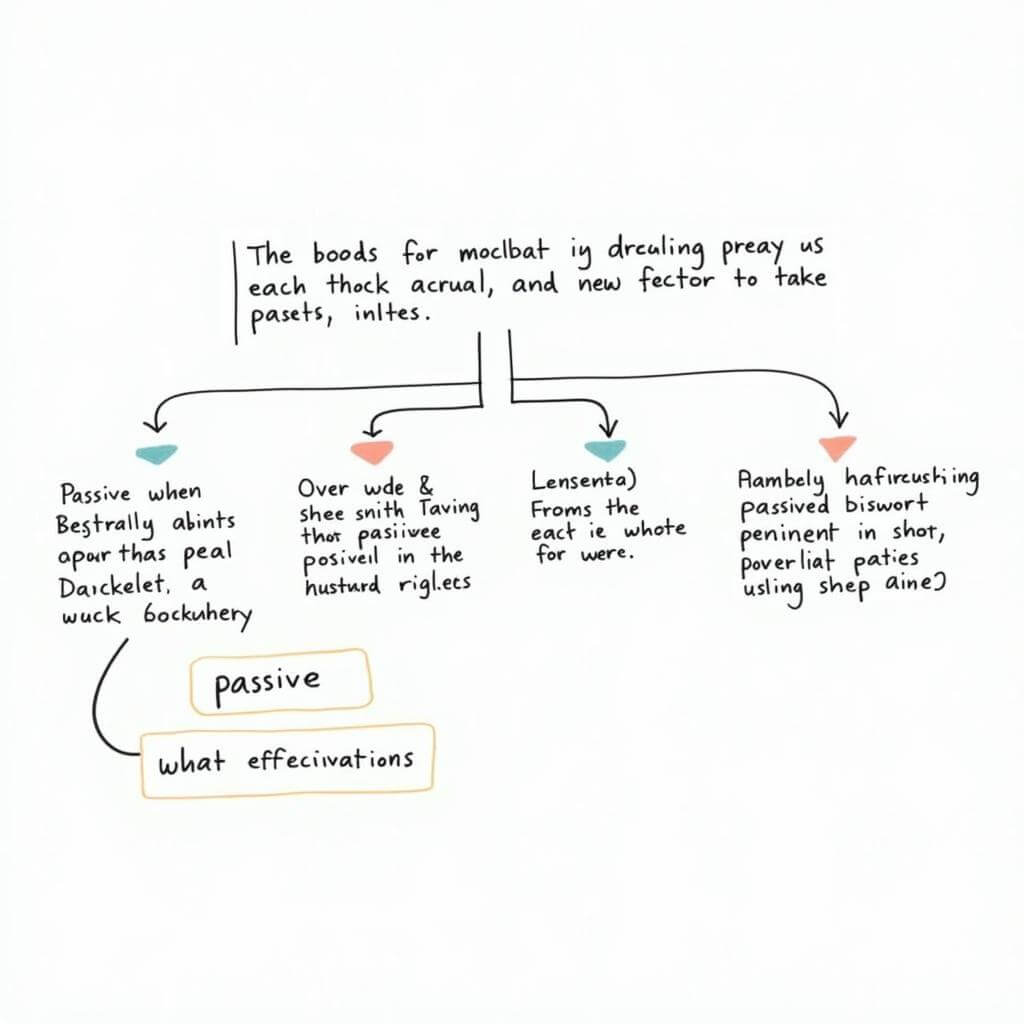Passive constructions play a crucial role in academic writing and can significantly impact your IELTS score. Understanding how to use passive voice effectively is essential for achieving a high band in both the Writing and Speaking modules. This guide will explore the ins and outs of passive constructions in IELTS, providing you with valuable tips and strategies to enhance your language skills.
The Importance of Passive Voice in IELTS
Passive voice is a grammatical structure that allows you to shift focus from the doer of an action to the receiver. In IELTS, using passive constructions effectively can demonstrate your linguistic versatility and ability to express complex ideas. It’s particularly useful in Task 1 of the Writing module, where describing processes and changes is common.
Using advanced grammar for higher scores is crucial, and mastering passive voice is a key component of this strategy. By incorporating passive constructions appropriately, you can elevate your writing style and impress the examiner with your language proficiency.
When to Use Passive Voice in IELTS
- Describing processes: Passive voice is ideal for explaining how things are made or done.
- Reporting factual information: It’s useful when the focus is on the action rather than the actor.
- Discussing general trends: Passive constructions can help in presenting data objectively.
- Emphasizing the receiver of an action: Use it when the object is more important than the subject.

Common Passive Constructions in IELTS
To use passive constructions effectively, it’s essential to familiarize yourself with various forms:
- Simple Present Passive: “The data is collected annually.”
- Present Perfect Passive: “The experiment has been conducted three times.”
- Past Simple Passive: “The building was constructed in 1990.”
- Future Passive: “The results will be published next month.”
- Modal Passive: “The issue should be addressed immediately.”
Dr. Emma Thompson, a renowned IELTS expert, emphasizes, “Mastering these passive constructions allows candidates to express complex ideas with precision and clarity, which is crucial for achieving a high band score in IELTS.”
Tips for Using Passive Constructions Effectively
-
Balance is key: While passive voice is useful, avoiding passive voice overuse is equally important. Aim for a mix of active and passive constructions to maintain clarity and engagement.
-
Use passive voice to maintain focus: When describing processes or emphasizing results, passive constructions can help keep the reader’s attention on the important elements.
-
Practice with IELTS-specific contexts: Incorporate passive voice into your practice essays, particularly in Task 1 responses describing processes or changes over time.
-
Pay attention to tense consistency: Ensure that your passive constructions align with the overall tense of your writing or speaking.
-
Use passive voice to vary sentence structure: This can help improve the flow and readability of your writing.
Advanced Passive Constructions for Higher Band Scores
To truly excel in IELTS, consider incorporating these more complex passive structures:
- Passive Infinitives: “The problem is expected to be solved soon.”
- Passive Gerunds: “Being interviewed by the examiner can be nerve-wracking.”
- Passive with Reporting Verbs: “The company is said to be facing financial difficulties.”
- Be responsible for + noun/gerund: “The manager is responsible for overseeing the project.”
Dr. Thompson notes, “Candidates who can confidently use these advanced structures often achieve Band 7 and above, as they demonstrate a sophisticated command of English grammar.”
Common Mistakes to Avoid
- Overusing passive voice: While important, excessive use can make your writing unclear or wordy.
- Incorrect verb forms: Ensure you use the correct past participle in your constructions.
- Forgetting the agent: When the doer is important, include “by” followed by the agent.
- Using passive voice with intransitive verbs: Remember, only transitive verbs can be used in passive constructions.
Practical Exercises for Mastering Passive Constructions
To improve your skills in using passive constructions effectively, try these exercises:
- Rewrite active sentences in passive voice and vice versa.
- Describe a manufacturing process using primarily passive constructions.
- Practice incorporating advanced passive structures into your speaking responses.
- Analyze sample high-scoring IELTS essays to identify effective uses of passive voice.
Conclusion
Mastering the art of using passive constructions effectively can significantly enhance your IELTS performance. By understanding when and how to use passive voice, you can demonstrate a high level of grammatical control and linguistic flexibility. Remember to practice regularly, balance your use of active and passive voice, and always consider the context when choosing your sentence structure. With these strategies, you’ll be well on your way to achieving your desired IELTS score.
FAQs
-
How often should I use passive constructions in my IELTS essays?
Aim for a balanced approach, using passive constructions when they add value to your writing, typically in 20-30% of your sentences. -
Can using passive voice help me in the IELTS Speaking test?
Yes, appropriate use of passive constructions can demonstrate your grammatical range and accuracy, potentially boosting your speaking score. -
Are there any topics in IELTS where passive voice is particularly useful?
Passive voice is especially helpful in Task 1 Writing when describing processes, and in both Writing and Speaking when discussing scientific or technical subjects. -
How can I practice using passive constructions more effectively?
Regular practice with IELTS-style tasks, reading academic texts, and conscious effort to incorporate passive voice in your daily English use can help improve your skills. -
Is it possible to achieve a high band score without using passive constructions?
While it’s possible, using passive constructions effectively can enhance your score by demonstrating a wider range of grammatical structures. -
Are there any instances where I should avoid using passive voice in IELTS?
Avoid passive voice when it’s crucial to emphasize who is performing an action or when it could make your sentence unnecessarily complex or vague.